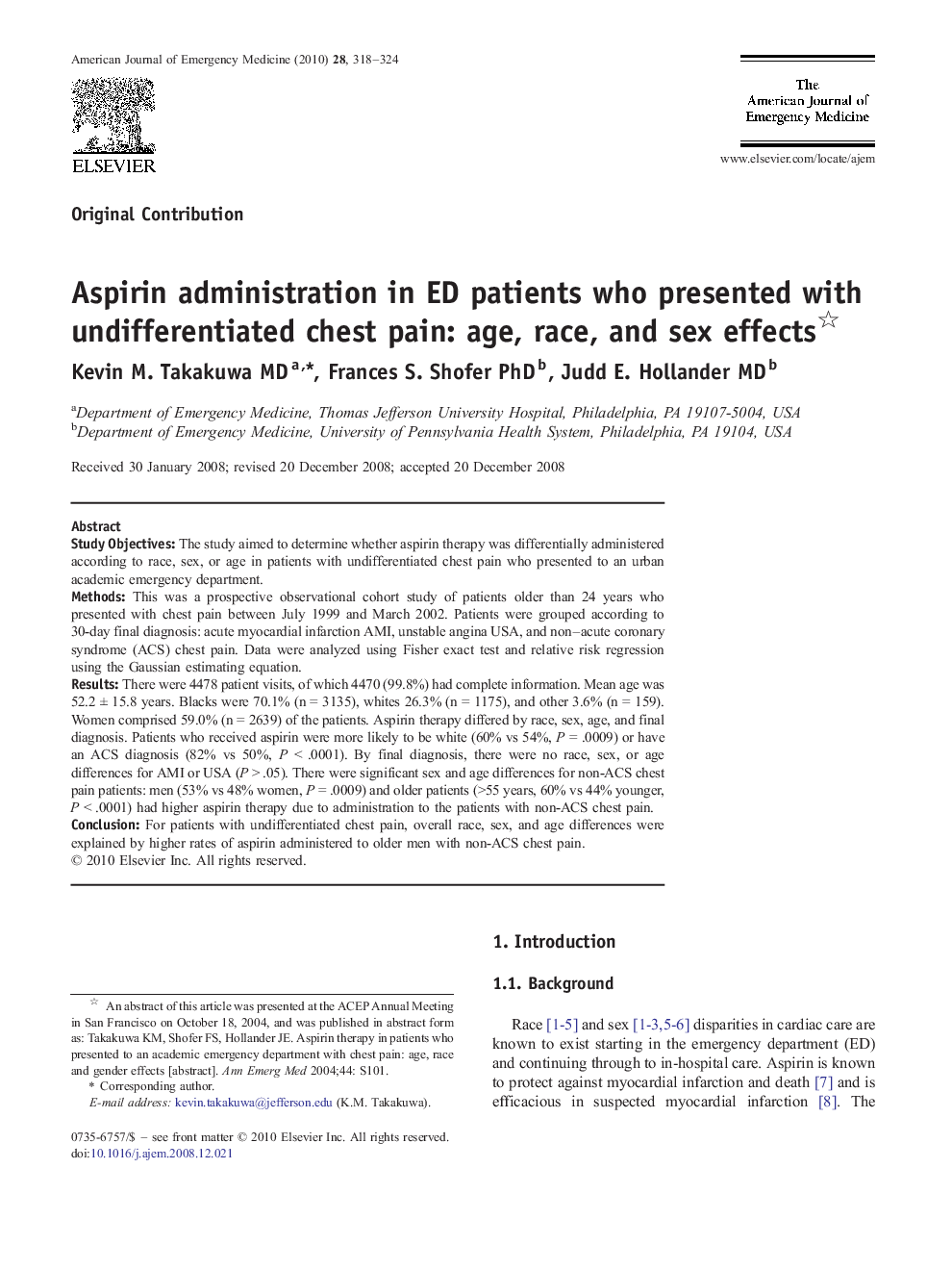| کد مقاله | کد نشریه | سال انتشار | مقاله انگلیسی | نسخه تمام متن |
|---|---|---|---|---|
| 3226242 | 1588159 | 2010 | 7 صفحه PDF | دانلود رایگان |

Study ObjectivesThe study aimed to determine whether aspirin therapy was differentially administered according to race, sex, or age in patients with undifferentiated chest pain who presented to an urban academic emergency department.MethodsThis was a prospective observational cohort study of patients older than 24 years who presented with chest pain between July 1999 and March 2002. Patients were grouped according to 30-day final diagnosis: acute myocardial infarction AMI, unstable angina USA, and non–acute coronary syndrome (ACS) chest pain. Data were analyzed using Fisher exact test and relative risk regression using the Gaussian estimating equation.ResultsThere were 4478 patient visits, of which 4470 (99.8%) had complete information. Mean age was 52.2 ± 15.8 years. Blacks were 70.1% (n = 3135), whites 26.3% (n = 1175), and other 3.6% (n = 159). Women comprised 59.0% (n = 2639) of the patients. Aspirin therapy differed by race, sex, age, and final diagnosis. Patients who received aspirin were more likely to be white (60% vs 54%, P = .0009) or have an ACS diagnosis (82% vs 50%, P < .0001). By final diagnosis, there were no race, sex, or age differences for AMI or USA (P > .05). There were significant sex and age differences for non-ACS chest pain patients: men (53% vs 48% women, P = .0009) and older patients (>55 years, 60% vs 44% younger, P < .0001) had higher aspirin therapy due to administration to the patients with non-ACS chest pain.ConclusionFor patients with undifferentiated chest pain, overall race, sex, and age differences were explained by higher rates of aspirin administered to older men with non-ACS chest pain.
Journal: The American Journal of Emergency Medicine - Volume 28, Issue 3, March 2010, Pages 318–324